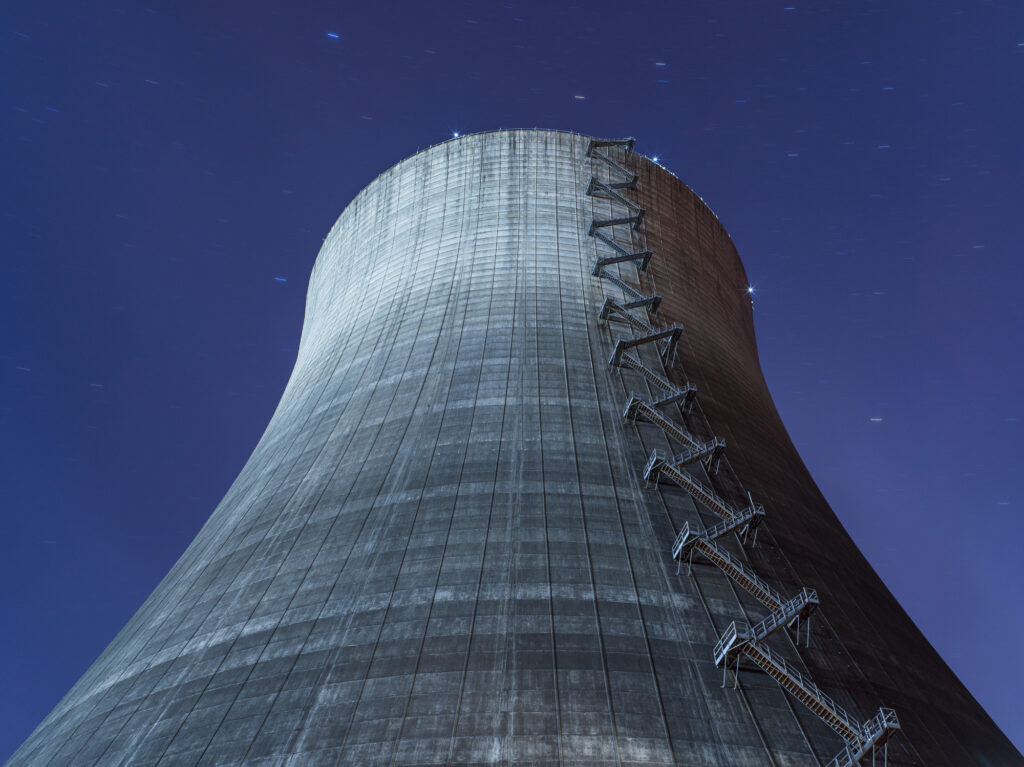[The following is the testimony of Prof. Herbert “Bud” Weinstein to the House Committee on Energy and Commerce, Subcommittee on Energy and Power. This hearing, held on July 24, was on the subject of “Laboratories of Democracy: The Economic Impacts of State Energy Policies.”]
Mr. Chairman and Members of the Committee, my name is Bernard Weinstein and I am the Associate Director of the Maguire Energy Institute at Southern Methodist University (SMU) and an adjunct professor of business economics at SMU’s Cox School of Business. Thank you for this opportunity to speak to you today.
I want to address two topics today: first, the ongoing “War on Coal” and its implications for electric power costs and grid reliability; and second, the contrasting economic performance of those states that have embraced energy development with those that haven’t.
The War on Coal
President Barack Obama, in pursuit of his “Climate Action Plan,” has been using his executive power in an effort to limit carbon dioxide (CO2) emissions from both new and existing power plants, further increase fuel economy standards for motor vehicles, and provide additional incentives for the development of renewable energy sources. Among these initiatives, the potentially most damaging to the economy are those related to power generation.
Electricity drives our economy, and nearly 40 percent of the electrons on the grid still come from coal-fired power plants, which will be most affected by mandates to reduce CO2 emissions and other greenhouse gases (GHG). Coal’s contribution to the electricity mix has been slowly declining in recent years, mainly because of a sluggish economy and comparatively cheap natural gas prices.
According to projections by the Energy Information Administration, by 2016 we’ll see a capacity decline of 42 gigawatts, or 14 percent, in the nation’s coal-fired generating capacity since 2012. Without question, the Environmental Protection Agency’s (EPA) proposed GHG standards for new and existing coal-fired power plants will accelerate plant closures. Indeed, these standards are so restrictive they will likely block the construction of new coal-fired power plants in Texas and elsewhere unless they utilize novel and expensive technology to capture carbon. The newest and most advanced coal-fired generators in Texas, and the rest of the nation for that matter, can’t meet the proposed emissions limit of 1,100 pounds of CO2 per megawatt hour for new power plants.
The consequences, in terms of higher energy costs and compromised grid reliability, could be serious. The new standards could also derail America’s nascent industrial revival while eroding the competitiveness of U.S. manufacturers. Hundreds of thousands of jobs are at risk—not a happy prospect in an economy that’s barely growing five years after the Great Recession with 9.5 million workers currently unemployed and millions more underemployed or discouraged from even looking for work.
Policy-makers and regulators must keep in mind that a one percent increase in economic output necessitates a 0.3 percent increase in energy use. By extension, any combination of policies that serves to increase the price of electricity or reduce the reliability of energy sources will have a negative impact on economic growth. Higher power costs can be especially detrimental to manufacturing industries, who consume proportionately more electricity than other sectors of the economy. Five million manufacturing jobs were lost during the Great Recession, and relatively few have come back during the recovery. But manufacturing still matters because of its strong linkages with other sectors of the economy. About one in eight private sector jobs relies on America’s manufacturing base.
We can ill-afford to risk undermining the availability of power in the U.S., placing electricity reliability in jeopardy and risking catastrophic economic impacts. Coal-fired plants cannot be replaced overnight by natural gas plants, and they certainly cannot quickly be replaced by alternative energy facilities. The time it takes to install pipeline and other infrastructure necessary even to begin the conversion of an old plant or construction of a new one is considerable. Accordingly, if EPA regulations accelerate the closure of coal-fired power plants, that, in turn, will increase the probability of an insufficient supply of electricity at times when demand peaks, such as during hot weather, or when there are unexpected problems with electricity generation or transmission.
EPA should not be developing long-term energy policy through environmental regulation. The improper regulation of GHG’s could drastically reduce the diversity of this country’s energy sources, particularly by minimizing coal-fired power generation, and hold the nation hostage to volatile natural gas prices and intermittent renewables like wind and solar for the next fifty years.
For example, proponents of the EPA’s proposed GHG rules contend they will incentivize renewable energy in states where such resources are a possibility. But we know from recent experience that the fastest growing form of renewable power is so-called rooftop solar, a form of distributed generation. The business model for this expansion is likely to be third-party leases for periods of 20 years or more, where available subsidies are transferred to third parties and where the leases are eventually securitized and sold as financial instruments on Wall Street.
There are a number of issues that must be resolved before federal rules encourage the transfer of affordable, reliable fossil-fuel base load electric power for leased rooftop solar. Since rooftop solar depends on the use of the electric grid for backup and for sales of excess power, net metering policy must take into account a fair allocation of the costs necessary to maintain grid integrity. Without doing so, relatively wealthy solar households or Wall Street investors will essentially be subsidized by lower income base load customers. Further, replacing reliable power sources with intermittent ones can have profound negative impacts for overall system reliability.
These risks must be taken seriously. As the Institute of Electrical and Electronics Engineers (IEEE) has stated, “a reliable supply of electricity is more than just a convenience, it is a necessity; the global economy and world’s very way of life depends on it.”[1] IEEE further observes that “Even minor occurrences in the electric power grid can sometimes lead to catastrophic ‘cascading’ blackouts. The loss of a single generator can result in an imbalance between load and generation, altering many flows in the electricity network.” The direct costs to high-technology manufacturing in just the San Francisco Bay Area during the California blackouts alone ran as high as one million dollars a minute due to lost production. The relatively brief Northeast blackout of 2003 cost business about $13 billion in lost productivity.[2]
The administration and Congress must also acknowledge that America, by itself, can do little to reduce global greenhouse gas emissions. In fact, GHG emissions in the United States today are at a 20-year low, even though the economy is more than 50 percent larger. The only effective way to significantly reduce global GHG emissions is through a coordinated strategy involving all of the planet’s major economies. Otherwise, any marginal reductions in America as a result of shuttering coal plants will be more than offset by rising emissions in China, India, Brazil, and other fast-growing economies around the world.
Energy development and economic growth: a contrast among the states
As is generally well known, America is in the midst of an oil and gas boom unlike anything we’ve seen since the 1920s, thanks largely to the technologies of horizontal drilling and hydraulic fracturing in the various shale plays around the country. Domestic oil production has jumped 40 percent since 2010 and is now above its peak in the mid-1980s. By 2016 at the latest, the U.S. will have reclaimed its crown as the world’s number one oil producing country. Natural gas output has also climbed dramatically, up 33 percent since 2010, pushing us ahead of Russia to become the planet’s number one gas producer.
Five years ago, the oil and gas industry accounted for only 3 percent of America’s economic output. Today, it’s more than 10 percent. Employment in the oil and gas industry is up nearly 30 percent since 2008 while total U.S. employment has just returned to its pre-recession level. Because of higher domestic production, oil imports have dropped from 50 percent of consumption to 30 percent in just five years, helping to lower our trade deficit and improve America’s global competitiveness.
Contrary to the commonly-held belief that only a few states are in the energy business, the Energy Information Administration reports that 24 states are currently producing commercial quantities of coal, 31 are producing crude oil, and 33 are producing natural gas. What’s more, current and prospective shale plays are found in most part of the U.S.
But the shale revolution has not been embraced by all of the states who are situated above the shale formations. In those states that have chosen to pursue energy development, output and jobs have grown faster than in most other states while their unemployment rates are well below the U.S. average of 6.1 percent. For example, Texas, which has aggressively developed its shale fields, has witnessed a 100 percent increase in oil production since 2010 and currently records an unemployment rate of 5.1 percent. By contrast, New York State, whose southern tier sits atop one of the “sweet spots” of the Marcellus Shale, has imposed a ban on hydraulic fracturing with the result that oil and gas production has plummeted in recent years while the state’s unemployment rate is currently at 6.7 percent, with some upstate counties as high as 7.5 percent.
- Texas v. California: Two large energy states pursuing different paths
Last year, Texas led the nation in job creation for the fourth straight year, adding 323,000 workers to payrolls. Through June of this year, another 225,000 jobs have been created and the state currently boasts the lowest unemployment rate (5.1%) of any large state. More incredibly, Texas has accounted for almost 35 percent of the nation’s job growth since 2000.
Without question, the tremendous growth in oil and gas production resulting from the “shale revolution” has accounted for much of Texas’ superior economic performance. The state now accounts for more than 25 percent of America’s oil and gas and would rank as the 14th-largest producer in the world if we were a separate nation.
Texas’ economic fortunes can also be attributed to a positive business climate and sensible, cost-effective regulation of energy and other sectors of the state’s economy. Contrary to assertions by some environmental activists, Texas is not a toxic wasteland. We care greatly about the quality of our air, water and land. But we make sure our regulatory environment is predictable and effective so that the costs of compliance aren’t burdensome to the point of discouraging new investment.
California’s economy has recovered somewhat from the Great Recession, though total payroll employment growth since 2008 has been a mere 322,100—about the same as Texas’ gains last year. Had the state been more supportive of energy development, especially in the huge Monterey Shale, California would likely have posted much faster job gains and its unemployment rate wouldn’t be 7.4 percent, the highest among the 10 largest states with the exception of Michigan.
According to some estimates, the Monterey Shale, which runs from Los Angeles to San Francisco, contains approximately two-thirds of America’s total shale oil reserves, or 15 billion barrels. Unfortunately, hydraulic fracturing has been roundly opposed by the state’s influential environmental community as well as many state and local government officials. Consequently, oil production has been falling rapidly in California for more than a decade while output in Texas has skyrocketed.
If California were to adopt more accommodating energy policies and regulations, the state could realize huge economic benefits. According to a recent study conducted by the University of Southern California and the Communications Institute, a Los Angeles think tank, development of the Monterey Shale would generate 500,000 direct and indirect jobs within three years and 2.8 million direct and indirect jobs within a decade.
- David v. Goliath: North Dakota slays New York
Two years ago, North Dakota passed Alaska to become America’s number two oil producing state. In just a few years, production has jumped from 10,000 barrels per day to more than one million barrels per day.
North Dakota is unique in that very few states sit atop formations like the Bakken Shale. But in addition to its resource base, the state’s business-friendly policies have helped grow its energy sector. Unlike New York, which prohibits the use of hydraulic fracturing, North Dakota offers an accommodating and supportive business and regulatory climate that encourages new investment in oil and gas production. Since 2008, North Dakota has created jobs at a faster clip than any other state and currently records the nation’s lowest unemployment rate, 2.9 percent.
Could New York replicate the experience of North Dakota? As mentioned earlier, the southern tier of New York is one of the “sweet spots” of the Marcellus Shale, the largest gas field in the continental United States. But because of the fracking ban, thousands of potential jobs and millions of new tax revenues are being forfeited. For example, the New York State Department of Environmental Conservation estimates that at least 25,000 new jobs would be created quickly if the state lifted the ban, and that figure doesn’t include the indirect and induced employment that would follow. Another study, prepare d by Michael Orlando of the University of Colorado, estimates that drilling and producing activities could support 39,000 new jobs in New York State within three years and 69,000 jobs within ten years. And the Manhattan Institute recently projected that with shale development, total employment in upstate New York by 2020 would be 54,000 higher than without shale development.
- Economic performance of other energy states
Other states that have encouraged their energy sectors have outperformed the U.S. averages for job creation and economic growth in recent years. But it’s important to note that the economic benefits from energy development are benefiting the entire nation, not just those states producing oil and gas. The shale boom has helped to revive America’s industrial base, boost our exports, and reduce our reliance on imported oil while creating hundreds of thousands of high-wage jobs. At the same time, cheap and abundant natural gas is reducing electricity and heating costs for millions of American households and businesses.





